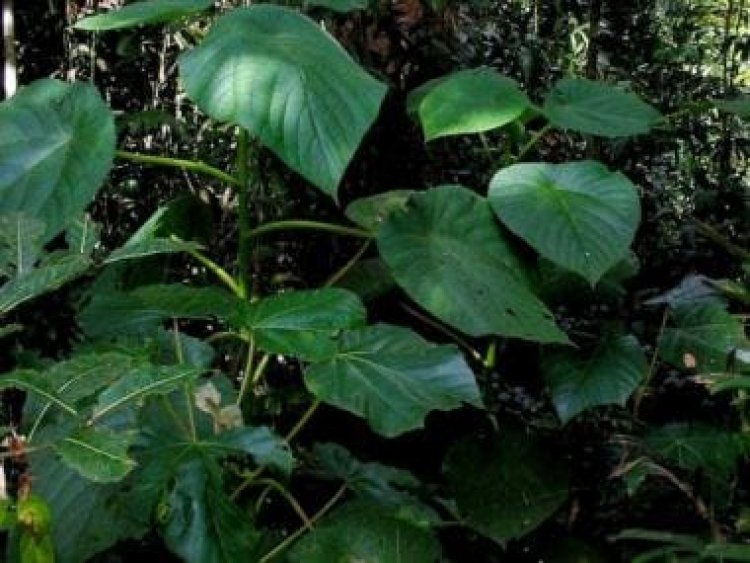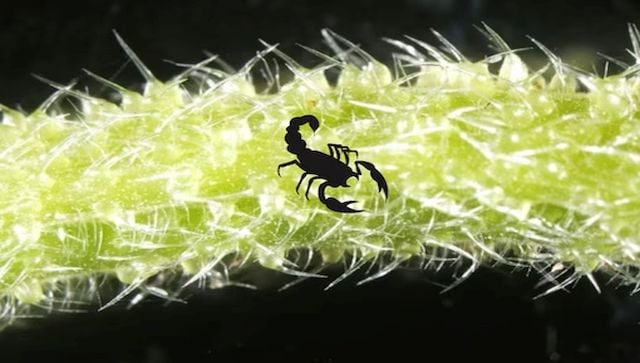The ‘suicide plant’: The story of growing the ‘world’s most dangerous shrub’ in a home garden
The ‘suicide plant’: The story of growing the ‘world’s most dangerous shrub’ in a home garden

A man in Britain has gone totally wild with his garden. He has grown the “world’s most dangerous” with a sting so severe it can lead to pain that lasts for months – and even suicide in some cases.
Forty-nine-year-old Daniel Emlyn-Jones decided to grow Gympie-Gympie in his home. It is kept in a cage with a danger sign.
An online tutor from Oxford, he is keen to cultivate unique flora and thus promote interest in plants. He said that he was growing Gympie-Gympie safely.
Emlyn-Jones grew the plant because he was “a bit bored with geraniums” and wanted to add “a bit of excitement” to his gardening hobby, reports Daily Mail. He spent around 60 Australian dollars to get the seeds from the country.
Also read: ‘These plants can kill you’: Know about world’s ‘deadliest’ Poison Garden in England
What is Gympie-Gympie?
The plant is officially called the Dendrocnide Moroides but is also known as the Australian stinging tree. It is a nettle-like shrub that can give a sting which feels like “being burnt with hot acid and electrocuted at the same time”, according to botanist Marina Hurley, who has studied the plant for years.
The plant is most commonly found in rainforest areas of Australasia, the Moluccas, and Indonesia. The leafy bush has heart-shaped foliage and while it appears harmless, it is fatal. It can grow up to 15 feet but most commonly grows to around 3 feet.
Why is the plant so dangerous?
Gympie-Gympie is covered with hair-like stinging needles, which contain a powerful neurotoxin. On being touched, the needles produce a burning sensation that intensifies over 20 to 30 minutes.
Recent research discovered a new class of neurotoxin miniproteins, which scientists christened “gympietides”. Irina Vetter, an associate professor at the University of Queensland’s Institute for Molecular Bioscience, said, “Although they come from a plant, the gympietides are similar to spider and cone snail toxins in the way they fold into their 3D molecular structures and target the same pain receptors — this arguably makes the Gympie-Gympie tree a truly ‘venomous’ plant.”
Vetter said the long-lasting pain inflicted by the tree may be explained by the gympietides permanently altering the chemical makeup of the affected sensory neurons — not due to the fine hairs getting stuck in the skin. The toxins released by the tree target pain receptors in similar ways as spider or scorpion venom.
The pain can continue for months, often leaving people sleepless. In some cases, the pain is so excruciating, it can even drive to suicide. It’s the reason Gympie-Gympie is also called the “suicide plant”.
According to reports, a man was driven mad by the pain after unknowingly using the leaf of the shrub as toilet paper and shot himself.

Hurley, who was studying stinging trees in Queensland, said that her first encounter with Gympie-Gympie produced a sneezing fit and left her eyes and nose running for hours. She once developed a severe allergy and even wearing masks and gloves could not shield her, leading to hospitalisation once.
It’s the “worst kind of pain you can imagine”, Hurley told Australian National Geographic. The allergic reaction she developed led to extreme itching, huge hives and needed steroid treatment, the report in the magazine says.
A former serviceman Cyril Bromley fell into one of the plants during WWII training exercises and he ended up strapped to a hospital bed, “as mad as a cut snake”, reports Discovery.com. Botanist Ernie Rider was stung in 1963 and felt free of the pain only two years later.
According to researchers, even dried leaves which have been stored away for a century can deliver a sting.
Who discovered Gympie-Gympie?
The plant was first documented in 1886 by a road surveyor AC Macmillan in North Queensland. In a report to his boss, he wrote that his packhorse “was stung, got mad, and died within two hours”, according to Australian National Geographic.
Similar tales are part of local folklore, where horses have jumped off cliffs in pain and forest workers have drunk only to rid themselves of the agony.
What to do if stung by the plant?
It’s important not to rub or scratch the area because if the hairs break off, it’ll be harder to remove them. Using the tweezers to pluck the needles out is also of no help since they are too fine and dense.
To remove delicate hair, it’s best to use adhesive strips or hair-removal wax strips.
Emlyn-Jones, who is growing the plant in Britain, said that he has been slightly stung by it through a fabric and it “wasn’t awful”. “I’ve got 3 per cent hydrochloric acid which you can soak the area with for 15 minutes to lessen the sting. It was very slight – it didn’t really bother me much to be honest,” he told Daily Mail.
So what use is the plant?
Emlyn-Jones said, “According to the internet, the Aborigines supposedly used it to help treat arthritis. I’m not sure how true that is, or how that would work.”
Interestingly, Gympie Gympie produces fruit. And there are some marsupial species, insects, and birds that consume the plant’s leaves and fruits without much problem.
During her research, Hurley found that the red-legged pademelon has developed immunity to the sting hairs of the plant and feeds on its leaves. Other Australian bugs and birds could also feed on it.
With inputs from agencies
Read all the Latest News, Trending News, Cricket News, Bollywood News,
India News and Entertainment News here. Follow us on Facebook, Twitter and Instagram.
What's Your Reaction?

























































